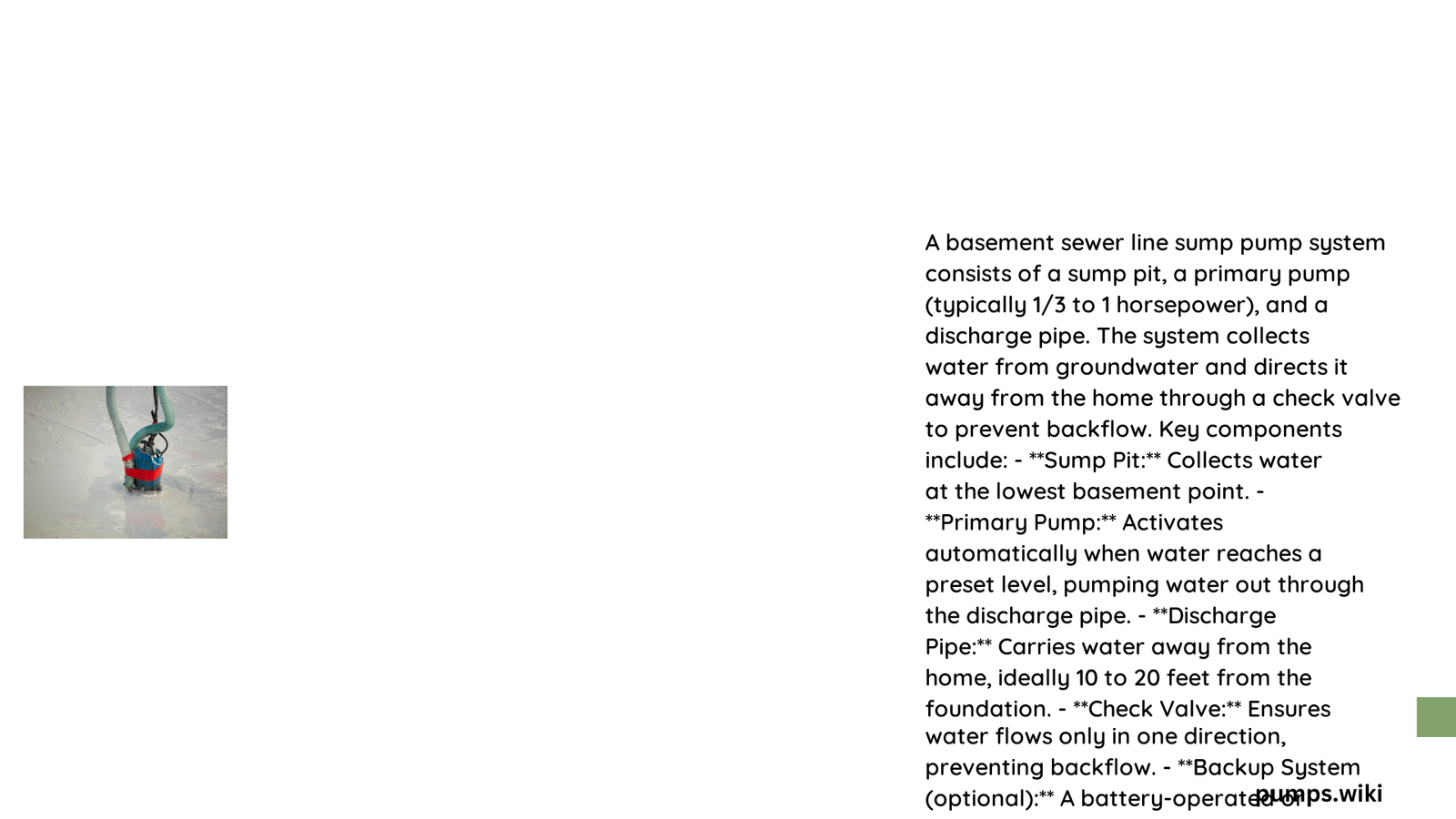Basement sewer line sump pump systems are critical infrastructure solutions designed to protect residential and commercial properties from water damage, flooding, and moisture-related issues. These sophisticated systems efficiently remove excess groundwater, prevent basement flooding, and manage complex drainage challenges by utilizing specialized pumps with varying horsepower ratings, discharge capacities, and advanced technological features that ensure reliable water extraction and property protection.
What Are Basement Sewer Line Sump Pump Systems?
Basement sewer line sump pump systems represent comprehensive water management solutions engineered to address underground water accumulation and potential flooding risks. These systems combine multiple components to effectively redirect water away from critical structural areas.
Key Components of Sump Pump Systems
| Component | Function | Typical Specifications |
|---|---|---|
| Primary Pump | Water Extraction | 1/3 to 1 HP |
| Backup Pump | Emergency Redundancy | Battery-powered |
| Discharge Pipe | Water Redirection | 1.25-1.5 inches |
| Sump Pit | Collection Reservoir | 30 inches deep |
How Do Basement Sewer Line Sump Pump Systems Work?

Basement sewer line sump pump systems operate through a strategic process:
- Water Collection
- Groundwater enters underground drainage systems
- Accumulates in strategically designed sump pit
-
Triggered by rising water levels
-
Pump Activation
- Float switch detects water elevation
- Activates primary submersible pump
-
Initiates water extraction mechanism
-
Water Redirection
- Pumps water through discharge pipes
- Moves liquid away from foundation
- Prevents potential structural damage
What Factors Determine Sump Pump System Effectiveness?
Several critical factors influence basement sewer line sump pump system performance:
- Horsepower Ratings
- 1/3 HP: Standard residential applications
- 1/2 HP: Moderate water table regions
-
3/4 to 1 HP: High-volume drainage requirements
-
Material Considerations
- Cast Iron: Durability and longevity
- Cast Bronze: Corrosion resistance
- Thermoplastic: Lightweight applications
What Are Installation Requirements?
Sump Pit Specifications
- Minimum depth: 30 inches
- Recommended area: 2.7 square feet
- Constructed from concrete, plastic, or non-corrosive metal
Electrical Considerations
- Voltage: 115 VAC or 230 VAC
- Amperage: Approximately 9 amps for 1/3 HP models
- Compliance with local electrical codes
What Are Potential Cost Implications?
Pricing Breakdown
- Pump Costs
- 1/3 HP Pumps: $200 – $500
- 1/2 HP Pumps: $300 – $700
-
Backup Systems: Additional $500 – $1,000
-
Installation Expenses
- Labor: $100 – $300 per hour
- Annual Maintenance: $50 – $100
What Performance Metrics Should Homeowners Expect?
- Average Lifespan: 5-10 years
- Typical Discharge Rates: 2,000 – 6,000 gallons per hour
- Vertical Lift Capabilities: Up to 15-20 feet
Conclusion
Basement sewer line sump pump systems provide critical protection against water damage, offering homeowners peace of mind through advanced technological solutions tailored to specific drainage challenges.
